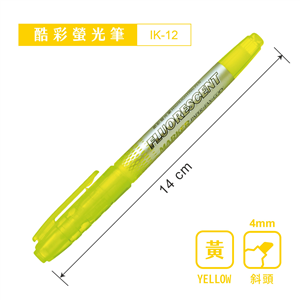 收藏
收藏

 3二手徵求有驚喜
3二手徵求有驚喜
定價:NT$ 903
優惠價: 93 折, NT$ 840
已售完,補貨中




「輝煌的啟示 (貳):十一世紀至十八世紀的亞美尼亞基督宗教手稿」集合一批精選典藏,包括合訂本,祈禱書卷軸,及來自東地中海地區的基督教福音書彩繪手抄本葉冊。
亞美尼亞彩繪手抄本是中東基督教教會一些裝飾最為奢華的範例。福音書彩繪手抄本為其中之集大成者,這主要是因為亞美尼亞會衆極為尊崇聖經文本,其程度就如同希臘和俄羅斯東正教徒對於聖像的尊崇。這些手抄本經常被亞美尼亞的統治者們携入戰場,一些福音書的複製單品也常常被賦予聖名,被認為具有神奇的力量。
奇里乞亞時期(公元十二至十四世紀)是亞美尼亞彩繪手抄本的黃金時代。奇里乞亞是當時最主要繕寫室的聚集區,它們包括赫羅馬克拉(位於嚴格意義上的奇里乞亞地區之外),迦納,西斯(首都),達紮克,以及斯克威萊;此地也匯集了傑出的藝術家們,羅斯林.索羅斯就是其中之一。到了十四世紀末期,奇里乞亞彩繪手抄本很大程度上受到了擴張中的穆斯林的影響。公元一三七五年,王朝被埃及的伊斯蘭統治者摧毀。成百上千的手抄本遺失或損毀,僅有少量存世。藝術家們逃離奇里乞亞,來到亞美尼亞其他中心地區,在那裏,儘管也會采用新環境的藝術形式,他們依然將奇里乞亞的彩繪手抄本傳統承遞下去。
彩繪手抄本作為亞美尼亞文化的承載,其重要性難以言盡。這些彩繪手抄本──特別是其中的福音書──作為最富有意義的文化產品,展現了她們所處的歷史,以及文化和傳統的力道。彩繪福音書手抄本通常包含了四類圖像:十頁為冊的聖經經文對照表(四福音書中經文類比的索引);以耶穌基督短暫一生的不同事工場景為主題繪製的導引;分置於四福音書每一卷伊始的四福音書作者的肖像畫(聖馬太,聖馬可,聖路加,以及聖約翰);最後還有可選頁,通常是獻給委托製作每一卷福音書的贊助人,其中,按照常規,贊助人的名字鎸寫在扉頁,與之一起的還有藝術家和抄寫師的名字,以及其他歷史信息,這些都是來確保委托製作神聖抄本的這一虔誠舉動,能夠穩獲救恩。
Illustrious Illuminations II: Armenian Christian Manuscripts from the Eleventh to the Eighteenth Century assembles a fine selection of bound volumes, prayer scrolls and illuminated leaves illustrating the Christian Gospel from the Eastern Mediterranean.
Armenian illustrated manuscripts are some of the most lavishly decorated codices of the Christian churches from the Middle East. The Gospels are paramount among these, primarily because of the Armenian community’s respect for the sacred texts, revering them in the same way that Greek and Russian Christians regard holy icons. Such texts were often carried into war by Armenian rulers and individual copies of the Gospels were given sacred names and believed to hold miraculous powers.
The golden age of Armenian illuminated manuscripts was in the Cilician period (12th–14th centuries). Cilicia was home to important scriptoria—the workshops of Hromkla (actually beyond Cilicia proper), Grner, Sis (the Capital), Drazark and Skevra, where there were many outstanding artists such as Thoros Roslin. Cilician illumination at the end of the fourteenth century was severely affected by the advance of the Muslims. The kingdom was destroyed by the Mamluks, the Islamic rulers of Egypt, in 1375. Manuscripts by the hundreds were lost, mutilated or destroyed; only a few survived. Many artists escaped from Cilicia to other Armenian centres—where they continued the tradition of Cilician illumination—while others chose to adopt the art forms of their new environments.
The importance of the book as a vehicle for the transmission of Armenian culture cannot be over stated. The illuminated manuscript—and in particular, the Gospel book—is the most significant cultural artefact, revealing both the history and strength of its traditions and heritage. Illuminated Gospel books typically include four types of images: a ten-page set of canon tables (indexes for comparing similar passages in the four Gospels); an introductory cycle of illustrations depicting various scenes from the ministry of Jesus; portraits of the four Evangelists (St Matthew, St Mark, St Luke and St John) each placed at the beginning of his Gospel; and optional dedications to the donor of the individual Gospel book, in which the donor’s name was routinely inscribed in the colophon, along with names of the artist and scribe—and other historical information—thus ensuring salvation for the pious act of commissioning a sacred book.
退換貨說明:
會員均享有10天的商品猶豫期(含例假日)。若您欲辦理退換貨,請於取得該商品10日內寄回。
辦理退換貨時,請保持商品全新狀態與完整包裝(商品本身、贈品、贈票、附件、內外包裝、保證書、隨貨文件等)一併寄回。若退回商品無法回復原狀者,可能影響退換貨權利之行使或須負擔部分費用。
訂購本商品前請務必詳閱退換貨原則。作者:Dr Florian Knothe 羅諾德 博士、Robert McCarthy 羅伯特‧麥卡錫
 收藏
收藏

 3二手徵求有驚喜
3二手徵求有驚喜
優惠價: 93 折, NT$ 840 NT$ 903
已售完,補貨中
「輝煌的啟示 (貳):十一世紀至十八世紀的亞美尼亞基督宗教手稿」集合一批精選典藏,包括合訂本,祈禱書卷軸,及來自東地中海地區的基督教福音書彩繪手抄本葉冊。
亞美尼亞彩繪手抄本是中東基督教教會一些裝飾最為奢華的範例。福音書彩繪手抄本為其中之集大成者,這主要是因為亞美尼亞會衆極為尊崇聖經文本,其程度就如同希臘和俄羅斯東正教徒對於聖像的尊崇。這些手抄本經常被亞美尼亞的統治者們携入戰場,一些福音書的複製單品也常常被賦予聖名,被認為具有神奇的力量。
奇里乞亞時期(公元十二至十四世紀)是亞美尼亞彩繪手抄本的黃金時代。奇里乞亞是當時最主要繕寫室的聚集區,它們包括赫羅馬克拉(位於嚴格意義上的奇里乞亞地區之外),迦納,西斯(首都),達紮克,以及斯克威萊;此地也匯集了傑出的藝術家們,羅斯林.索羅斯就是其中之一。到了十四世紀末期,奇里乞亞彩繪手抄本很大程度上受到了擴張中的穆斯林的影響。公元一三七五年,王朝被埃及的伊斯蘭統治者摧毀。成百上千的手抄本遺失或損毀,僅有少量存世。藝術家們逃離奇里乞亞,來到亞美尼亞其他中心地區,在那裏,儘管也會采用新環境的藝術形式,他們依然將奇里乞亞的彩繪手抄本傳統承遞下去。
彩繪手抄本作為亞美尼亞文化的承載,其重要性難以言盡。這些彩繪手抄本──特別是其中的福音書──作為最富有意義的文化產品,展現了她們所處的歷史,以及文化和傳統的力道。彩繪福音書手抄本通常包含了四類圖像:十頁為冊的聖經經文對照表(四福音書中經文類比的索引);以耶穌基督短暫一生的不同事工場景為主題繪製的導引;分置於四福音書每一卷伊始的四福音書作者的肖像畫(聖馬太,聖馬可,聖路加,以及聖約翰);最後還有可選頁,通常是獻給委托製作每一卷福音書的贊助人,其中,按照常規,贊助人的名字鎸寫在扉頁,與之一起的還有藝術家和抄寫師的名字,以及其他歷史信息,這些都是來確保委托製作神聖抄本的這一虔誠舉動,能夠穩獲救恩。
Illustrious Illuminations II: Armenian Christian Manuscripts from the Eleventh to the Eighteenth Century assembles a fine selection of bound volumes, prayer scrolls and illuminated leaves illustrating the Christian Gospel from the Eastern Mediterranean.
Armenian illustrated manuscripts are some of the most lavishly decorated codices of the Christian churches from the Middle East. The Gospels are paramount among these, primarily because of the Armenian community’s respect for the sacred texts, revering them in the same way that Greek and Russian Christians regard holy icons. Such texts were often carried into war by Armenian rulers and individual copies of the Gospels were given sacred names and believed to hold miraculous powers.
The golden age of Armenian illuminated manuscripts was in the Cilician period (12th–14th centuries). Cilicia was home to important scriptoria—the workshops of Hromkla (actually beyond Cilicia proper), Grner, Sis (the Capital), Drazark and Skevra, where there were many outstanding artists such as Thoros Roslin. Cilician illumination at the end of the fourteenth century was severely affected by the advance of the Muslims. The kingdom was destroyed by the Mamluks, the Islamic rulers of Egypt, in 1375. Manuscripts by the hundreds were lost, mutilated or destroyed; only a few survived. Many artists escaped from Cilicia to other Armenian centres—where they continued the tradition of Cilician illumination—while others chose to adopt the art forms of their new environments.
The importance of the book as a vehicle for the transmission of Armenian culture cannot be over stated. The illuminated manuscript—and in particular, the Gospel book—is the most significant cultural artefact, revealing both the history and strength of its traditions and heritage. Illuminated Gospel books typically include four types of images: a ten-page set of canon tables (indexes for comparing similar passages in the four Gospels); an introductory cycle of illustrations depicting various scenes from the ministry of Jesus; portraits of the four Evangelists (St Matthew, St Mark, St Luke and St John) each placed at the beginning of his Gospel; and optional dedications to the donor of the individual Gospel book, in which the donor’s name was routinely inscribed in the colophon, along with names of the artist and scribe—and other historical information—thus ensuring salvation for the pious act of commissioning a sacred book.
退換貨說明:
會員均享有10天的商品猶豫期(含例假日)。若您欲辦理退換貨,請於取得該商品10日內寄回。
辦理退換貨時,請保持商品全新狀態與完整包裝(商品本身、贈品、贈票、附件、內外包裝、保證書、隨貨文件等)一併寄回。若退回商品無法回復原狀者,可能影響退換貨權利之行使或須負擔部分費用。
訂購本商品前請務必詳閱退換貨原則。
※ 二手徵求後,有綁定line通知的讀者,
該二手書結帳減5元。(減5元可累加)
請在手機上開啟Line應用程式,點選搜尋欄位旁的掃描圖示
即可掃描此ORcode
|
||||||||||||||||||
|
||||||||||||||||||
|
||||||||||||||||||













